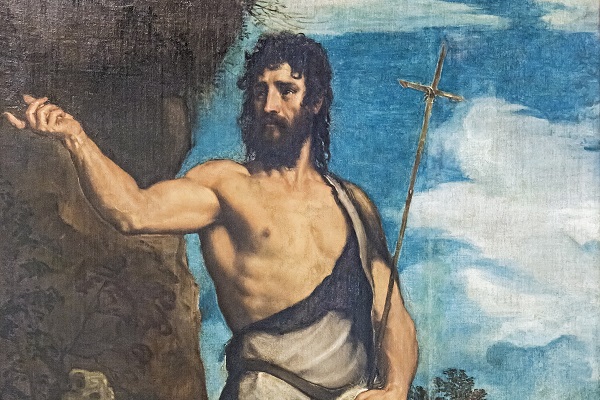
August 29: The Beheading of St. John the Baptist
- By C Barnett --
- 26 Aug 2016 --

August 29 commemorates the martyrdom of Saint John the Baptist.
Saint John the Baptist is a key figure in most world religions. He has made significant influences in Christianity, Islam, Judaism, Mandaeism, the Baha’i Faith, etc. It’s also worthy to note that he is the cousin of Jesus, the messiah for Christians whom John prophesied early on his religious life. Every 29th of August, Catholics observe the Feast of the Decollation or Beheading of Saint John the Baptist.
August 29: The Beheading of St. John the Baptist.[/tweetthis]
At the height of his prophetic career, Saint John was incarcerated by Herod Antipas, the Roman governor of Galilee. St. John was imprisoned for criticizing Herod when the latter left his lawful wife and cohabited with the wife (Herodias) of his brother Philip I. Herodias has a daughter named Salome.
During one of Herod’s birthday celebrations, his step-daughter participated in the entertainment and danced. With all the audience pleased, Herod promised to fulfill any wish that Salome could think including the bestowment of up to half of his kingdom. Confused on the wish she should make, Salome consulted her mother Herodias. Being furious towards John the Baptist, Herodias advised her daughter to ask for the head of the prophet. In front of Herod and his guests, Salome exclaimed “Give me now the head of John the Baptizer on a platter.”
Herod had second thoughts of killing John the Baptist because of the prophet’s growing influence on people at that time. The Roman governor has also started to acknowledge the significance of St. John’s teachings and prophecies. But because he wanted to keep his integrity and because of his concerns on St. John’s growing power and influence that might trigger a rebellion, he agreed to Salome’s request.
Based on certain accounts, the head of the dead preacher placed on a platter was still able to utter his last words or warning to Herod “Herod, you should not have the wife of your brother Philip.” John the Baptist was believed to be killed on August 29 of either the 28 or 29 AD. His body was collected by his followers and was buried at Sebastia.
#OTD 29 August: feast of beheading of St John the Baptist. Bits of body are widely scattered, sometimes in duplicate. pic.twitter.com/Qj6lsltPvu
— Caroline Murray (@Prof_hedgehog) August 29, 2015
Aside from the beheading itself, Catholics also commemorate the founding of St. John’s head. Based on scriptural accounts, St. John’s severed head was buried by Herodias in a dung heap. Joanna who will eventually become a saint secretly recovered St. John’s head and buried it on Mount of Olives. The actual location of the saint’s head remained uncertain until the First Finding during the 4th century. But the monk who possessed St. John’s relic at that time was worried of attackers so he hid the remains again.
The Second Finding of the Head of St. John the Forerunner that occurred on February 24 in 452 AD remains the official date of the discovery that is backed by the Catholic Church. From the monks who discovered the head, it changed possessions and locations from Emesa, Constantinople, and now to San Silvestro in Capite, Rome.
A Third Finding is suggested by those who don’t belong to the Catholic Church. Many believed that St. John’s head was again transferred and hidden during the Muslim raids of the 9th century.


















